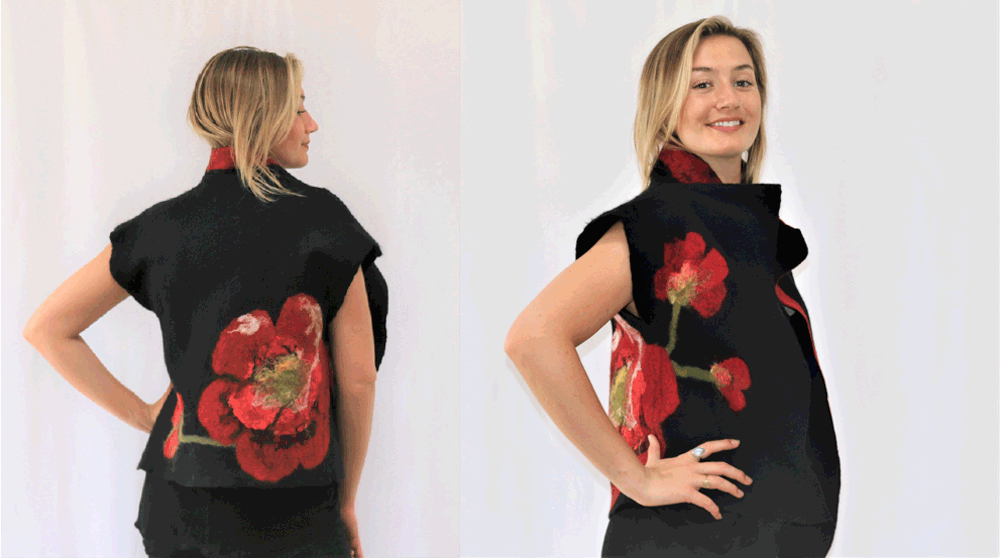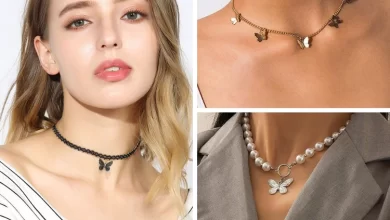Solmaz Are Always Fashionable:

Clothing doesn’t make the man or woman, but it does make a man or woman fashionable. solmaz shams says: “Looking good and dressing up isn’t just a favour you do for yourself—a it’s favour you do for the people around you,” Paloma Picasso said in Vogue years ago.
After Working on an Exhibition:
After working on an exhibition at the Palos Verdes Art Center last fall. I’d browse the shop, which sells items made by members of the local arts and crafts community. I’d find myself drawn to the wearable art pieces, These designed and sewn by Solmaz Shams. Everything was exquisite and seductive to me, including the patterns, textures, and colors. I was curious about the person behind them. Through a series of events, I was able to do so, and the following is her story.
Fabric, Shape, and Fit are All Important Factors to Consider:
Solmaz Shams is a Rancho Palos Verdes native, She graduated from Farah (now Alzahra) University in Iran, With a Bachelor of Arts degree in fashion and textile design in 1977. Solmaz Shams got a job as a designer for a company right away, She managed and oversaw production. However, her husband, an economics and computer science professor, accepted a two-year work/study position at George Washington University in Washington, D.C. the following year. “The Revolution happened in 1979,” Solmaz says, “and we decided to stay and not return.”
Solmaz Occupied Herself:
Solmaz Shams has raised her three children with her busy life they were born in Maryland and at last attended the University of Maryland.
Washington-Area Dress Designers:
Solmaz began assisting two Washington-area dress designers despite his newness to the country. “I choose to begin my own studio after working with them for a couple of years.” That was in Bethesda in 1990, and her bridal gown, evening gown, and haute couture-style garments were custom-made. Solmaz’s company operated from 9 a.m. to 5 p.m. They took over from there after she designed the outfits and cut the fabric.
Also Read: aydin maxwell
Solmaz Claims:
Solmaz claims that she has never advertised and that word of mouth has spread about her. Someone at a party might make a remark about another person’s attire and inquire about it, resulting in a referral. Two of her clients worked for Channel 7, and it’s a safe bet that a television personality would rather be seen in an outfit that won’t be mistaken for its identical twin on the back of another person at a posh social gathering. To put it another way, assuming you needed to be unique, you didn’t shop at a big-box store. The way to go was to have custom-made clothing made.
Opportunity To Meet Embassy Wives:
Embassies in Washington, D.C. were another source for her clientele. Solmaz was a member of a group that visited a different embassy every month, giving her the opportunity to meet embassy wives from all over the world. She met and designed clothes for a number of sophisticated women who attended or hosted the usual grand parties and, as a result, invested time and money in their attire. “Fashion is the armour to survive everyday life,” as the late Bill Cunningham put it, and the ladies would certainly be in style at these istanbul escort parties.
Relied on Her Judgement:
Solmaz recalls working closely with her clients back in those days. She would visually size up the person’s body shape and complexion, then make sketches to see what would look best with their figure. She’d also inquire about the occasion for wearing the dress or outfit. Is it a joyful or solemn occasion? Solmaz also worked around the client’s colour preferences. If she didn’t think the colour was right for them, she’d recommend something else. Her customers, she claims, relied on her judgement and followed her advice.
New Designs and Colour Patterns:
Solmaz has never stopped coming up with new designs and colour scheme, despite the fact that she hasn’t had her business where she would meet and consult with potential clients in years. She opens a book filled with sketches and says, “I do a lot of sketches.” “I just start drawing wherever I am.” She starts by deciding on the fabric she will use. The next step, she says, is to pick her colours. “I love bright colours,” she says, and I’ll admit, I’m a little taken aback.
Most Shocking Experiences of My Life:
My response is that her clothing, which consists primarily of light jackets and shawls, impresses me for its colour, which is subdued, softly glowing, and low-intensity, and which I associate with Japan or Central and Western Europe. Returning from a trip to Japan and landing in Honolulu on the flight home, one of the most shocking experiences of my life was being shocked by the blinding colours of mainland tourists visiting Oahu. So I know the difference between bright and subdued, and I’ve always favoured the latter.
In a Good Mood:
Solmaz would sometimes travel with her husband or meet him at his destination, Her husband’s job required him to travel all over the world. In this way, while travelling in Kyrgyzstan and Tajikistan in 2005, she came across the art or technique of “felting,” which has been around for centuries, dating back to the Neolithic period if you really want to know, but has remained largely in Central and East Asia.
Spends a Lot of Time:
Solmaz spends a lot of time explaining the differences between needle felting, wet felting, and nuno felting to me. Felt is a type of textile that is made by matting, condensing, and pressing fibres together to form a non-woven fabric. Felting, also known as felting, is an ancient art form that predates both spinning and weaving. Urnamman of Lagash is credited with inventing the technique by the Sumerians, while Saint Clement or Saint Christopher is credited by Christians. If you’re discovering it for the first time, you can simply credit Solmaz Shams, who recently gave felting workshops at the PV Art Center and may do so again soon.
Incorporate it Into Her Designs:
All of this is a long way of saying that after discovering felting, Solmaz wanted to learn more about it and incorporate it into her designs. She searched the Washington, D.C., Maryland, and Virginia areas before finding a woman who did felting at the Torpedo Factory in Old Town Alexandria, but only for flower patterns rather than clothing. At the very least, it was something. As a result, Solmaz decided to take a private lesson with her. When Solmaz finally asked how much she owed her teacher. The woman replied that she had learned from Solmaz Shams. Solmaz should be compensated.
Solmaz explains, “That was the start.” “I practised felting the rest of the way.” Repeat the process. If something didn’t work out the first time, I repeated the process until it did.”
The Art of Felting:
Mastering the art of felting and being able to incorporate it into her clothing designs was yet another step that distinguished her “wearable art.”
Silk Painting Classes:
Solmaz began taking silk painting classes at the PV Art Center after she and her husband moved to California in 2014. (The two or three wool paintings on view in her studio reveal yet another aspect of her talent). When she mentioned that she had worked as a fashion designer, they suggested that she put some of her work in the gallery’s store.
Teaching Faculty Member:
However, since she and her husband had both retired, all of the pieces Solmaz could show were still in boxes. They did, however, find enough, she claims, so she was able to bring a good selection to the Art Center for them to view. Solmaz continues, “It was rewarding in another way because, having recently moved into the area, I began to meet people of similar nature and sensibility,” which isn’t always easy when resettling in a new home.” She praises the friends she’s made at the Art Center, where she’s now a teaching faculty member.
I imagined a line of clients at her door, with Solmaz consulting with each one about patterns, fabrics, and colour, despite the fact that she’d been implying otherwise all along.
The Art Center:
She reminds me, “That used to be back in the day.” “I don’t take many personal calls; the majority of them come from the Art Center.”
But don’t you think people will contact you to inquire about your other offerings?
She responds, “It does happen on occasion.”
And you’re the one who makes it all? Tops, skirts, coats, and scarves, to name a few.
“Everything,” says the speaker.
Also, do you have hats?
“I was planning on making hats, I’m more interested in making handbags.” Hats aren’t something I do right now.” She makes a funny noise. “It’s a possibility,” says the narrator.
Variety and Craftsmanship of the Outfits:
I’m blown away by the variety and craftsmanship of the outfits on display at Solmaz’s home studio/workshop. I look around and take it all in.. “In designing, I consider both clothes and the body architecturally,”. Elsa Schiaparelli once said, “structure and line are the all-important factors in the construction of fashions.” Of course, there’s also the issue of relief. Clothes must appear to belong to the woman wearing them, or they are inappropriate.”
Solmaz shams, I believe, would share my opinion. She’s got a good eye for it and a good sense of what’s going on. Those who dress in her one-of-a-kind designs will look good and right.








